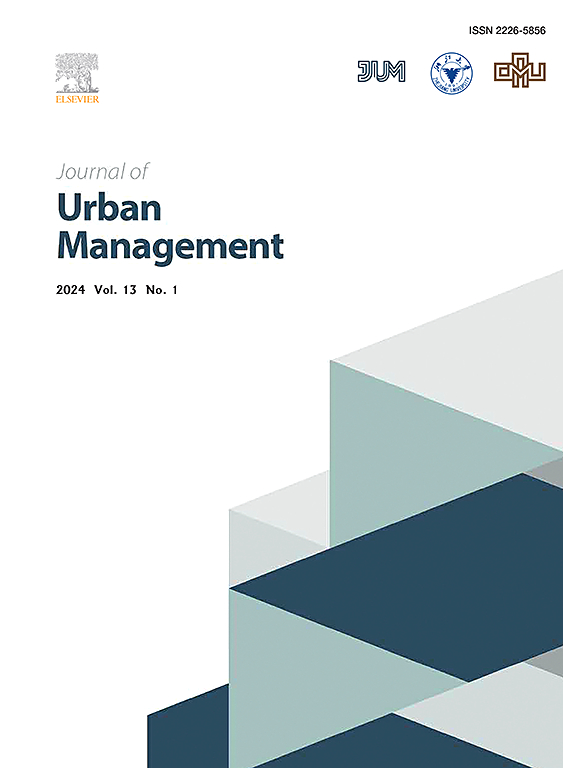Generated nighttime street view image to inform perceived safety divergence between day and night in high density cities: A case study in Hong Kong
IF 5
2区 社会学
Q1 URBAN STUDIES
引用次数: 0
Abstract
Safety perception is widely considered a fundamental aspect of urban life, which significantly influences citizens' well-being and quality of life as well as having crucial impact on the nighttime economy. However, there is a scarcity of understanding of nighttime safety despite the fast-growing body of urban scene auditing research based on daytime street view imagery (SVI). To fill the gap, this study collected ∼1000 pairwise day-and-night SVIs to train a day-to-night (D2N) SVI generator to effectively predict nighttime SVI based on daytime counterpart using generative adversarial network (GAN). The accuracy of fake nighttime image was evaluated with commonly-used GAN metrics (e.g., structural similarity index, inception score) and human validation. Then, an online visual survey with 46 participants was conducted to collect their perceived safety on street scenes during daytime and nighttime (D&N), and the results become training labels for machine learning models to predict D&N safety perceptions. Our results revealed significant discrepancies in D&N safety perception. First, through correlation analysis, we found that the sky and building features matter to the prediction accuracy of generated nighttime SVIs. Second, the micro-level streetscape features (e.g., pavements, roads, and buildings) play influential roles in perceived safety. Third, higher safety perceptions are consistently found in areas with higher building density regardless of whether they are daytime or night. In contrast, untended trees and grass reduce perceived safety at night. This study provides a valuable reference for improving the accuracy of generating nighttime images from daytime SVIs. It also reveals how streetscapes affect D&N safety perceptions in high-density cities like Hong Kong, providing empirical evidence for urban design policies to facilitate nighttime attractiveness and prosperity.
生成夜间街景图像,告知高密度城市的安全感知差异:以香港为例
安全感知被广泛认为是城市生活的一个基本方面,它显著影响着市民的幸福感和生活质量,并对夜间经济产生至关重要的影响。然而,尽管基于日间街景图像(SVI)的城市场景审计研究迅速发展,但对夜间安全的了解却很少。为了填补这一空白,本研究收集了约1000个成对的昼夜SVI来训练一个日-夜(D2N) SVI生成器,使用生成对抗网络(GAN)有效地预测基于白天对应的夜间SVI。利用常用的GAN指标(如结构相似性指数、初始分数)和人工验证来评估假夜间图像的准确性。然后,对46名参与者进行了一项在线视觉调查,以收集他们在白天和夜间对街道场景的感知安全性(D&;N),结果成为机器学习模型的训练标签,以预测D&;N安全感知。我们的研究结果揭示了D&;N安全感知的显著差异。首先,通过相关分析,我们发现天空和建筑物特征对生成的夜间svi的预测精度有影响。其次,微观层面的街道景观特征(如人行道、道路和建筑物)在感知安全中发挥着重要作用。第三,无论是白天还是晚上,建筑密度高的地区都有较高的安全意识。相比之下,无人看管的树木和草地会降低夜间的安全感。该研究为提高白天svi生成夜间图像的精度提供了有价值的参考。它还揭示了街道景观如何影响香港等高密度城市的安全观念,为城市设计政策提供了经验证据,以促进夜间吸引力和繁荣。
本文章由计算机程序翻译,如有差异,请以英文原文为准。
求助全文
约1分钟内获得全文
求助全文
来源期刊

Journal of Urban Management
URBAN STUDIES-
CiteScore
9.50
自引率
4.90%
发文量
45
审稿时长
65 days
期刊介绍:
Journal of Urban Management (JUM) is the Official Journal of Zhejiang University and the Chinese Association of Urban Management, an international, peer-reviewed open access journal covering planning, administering, regulating, and governing urban complexity.
JUM has its two-fold aims set to integrate the studies across fields in urban planning and management, as well as to provide a more holistic perspective on problem solving.
1) Explore innovative management skills for taming thorny problems that arise with global urbanization
2) Provide a platform to deal with urban affairs whose solutions must be looked at from an interdisciplinary perspective.
 求助内容:
求助内容: 应助结果提醒方式:
应助结果提醒方式:


